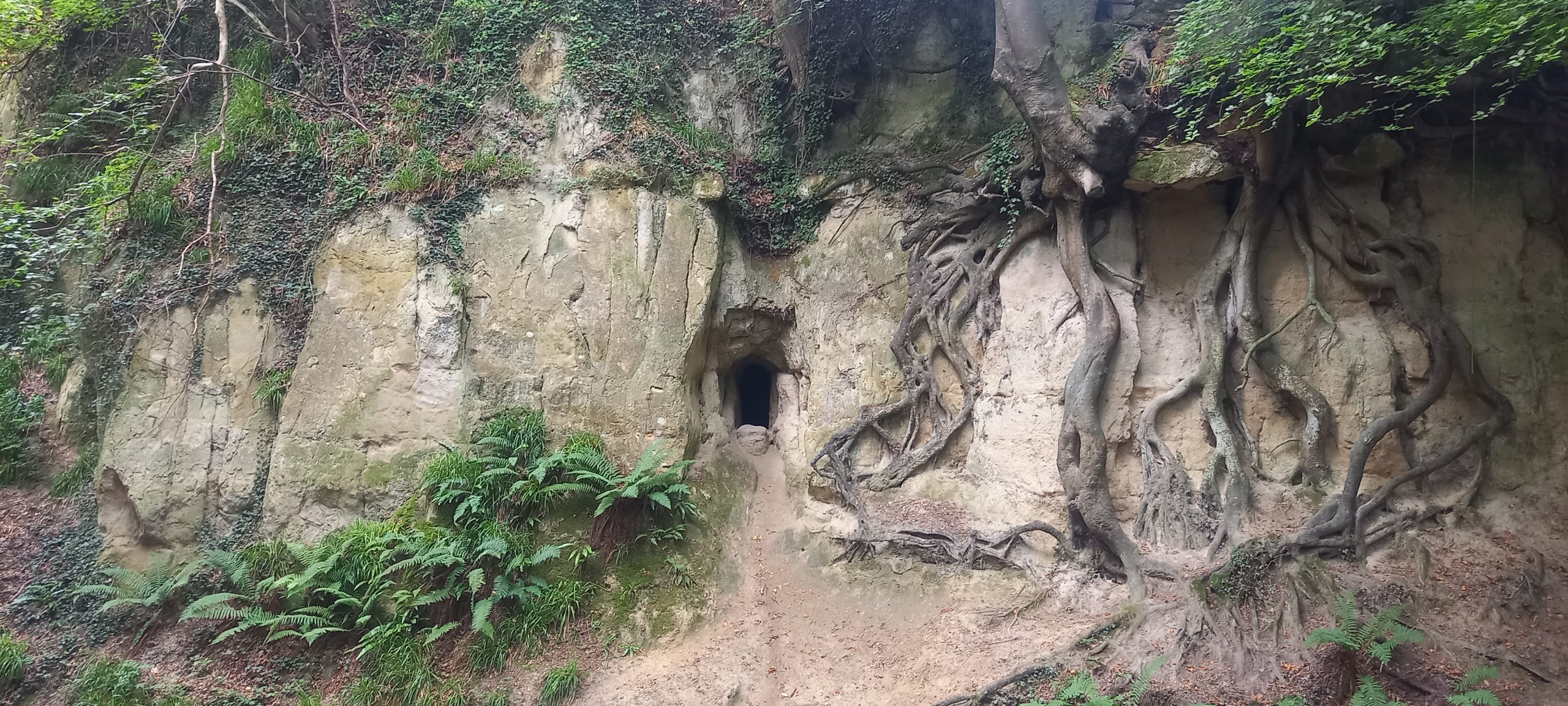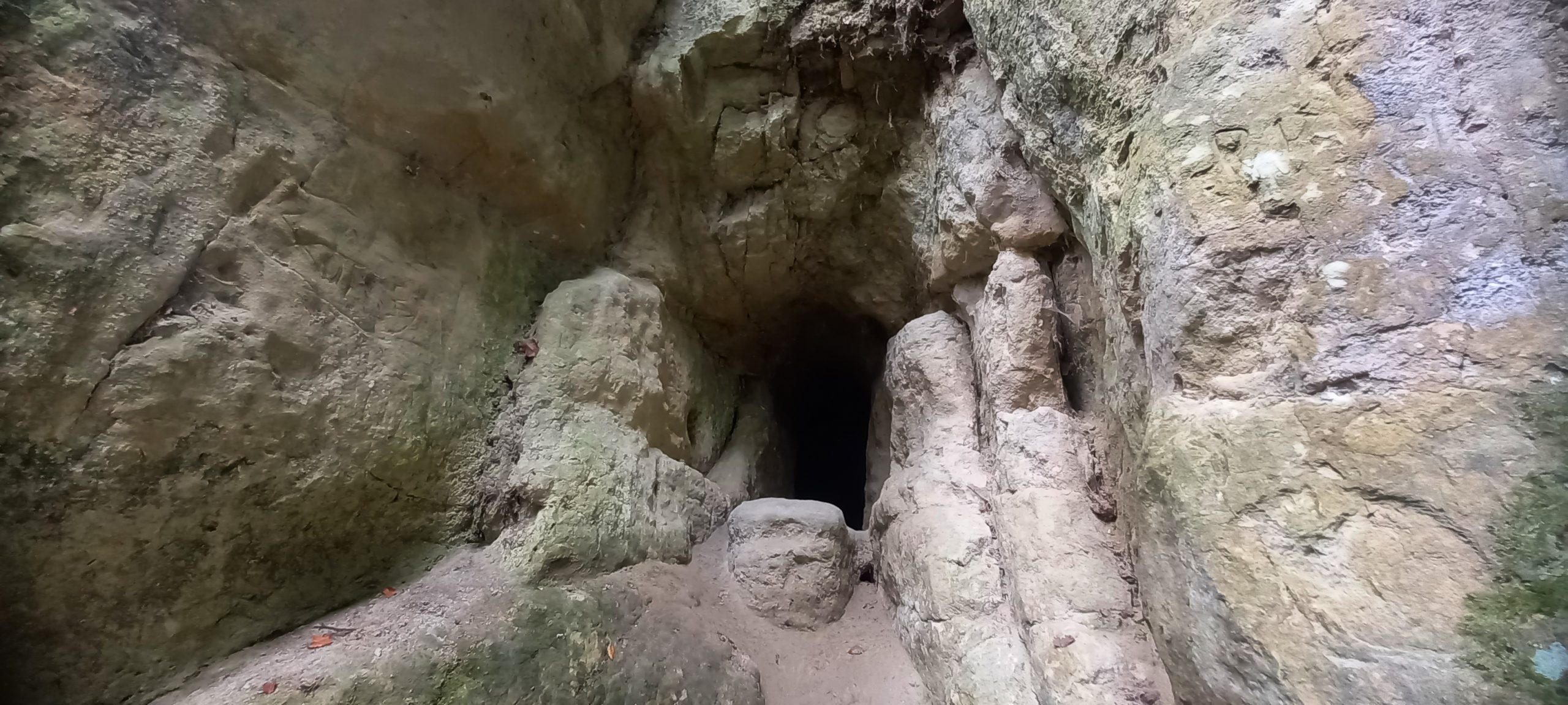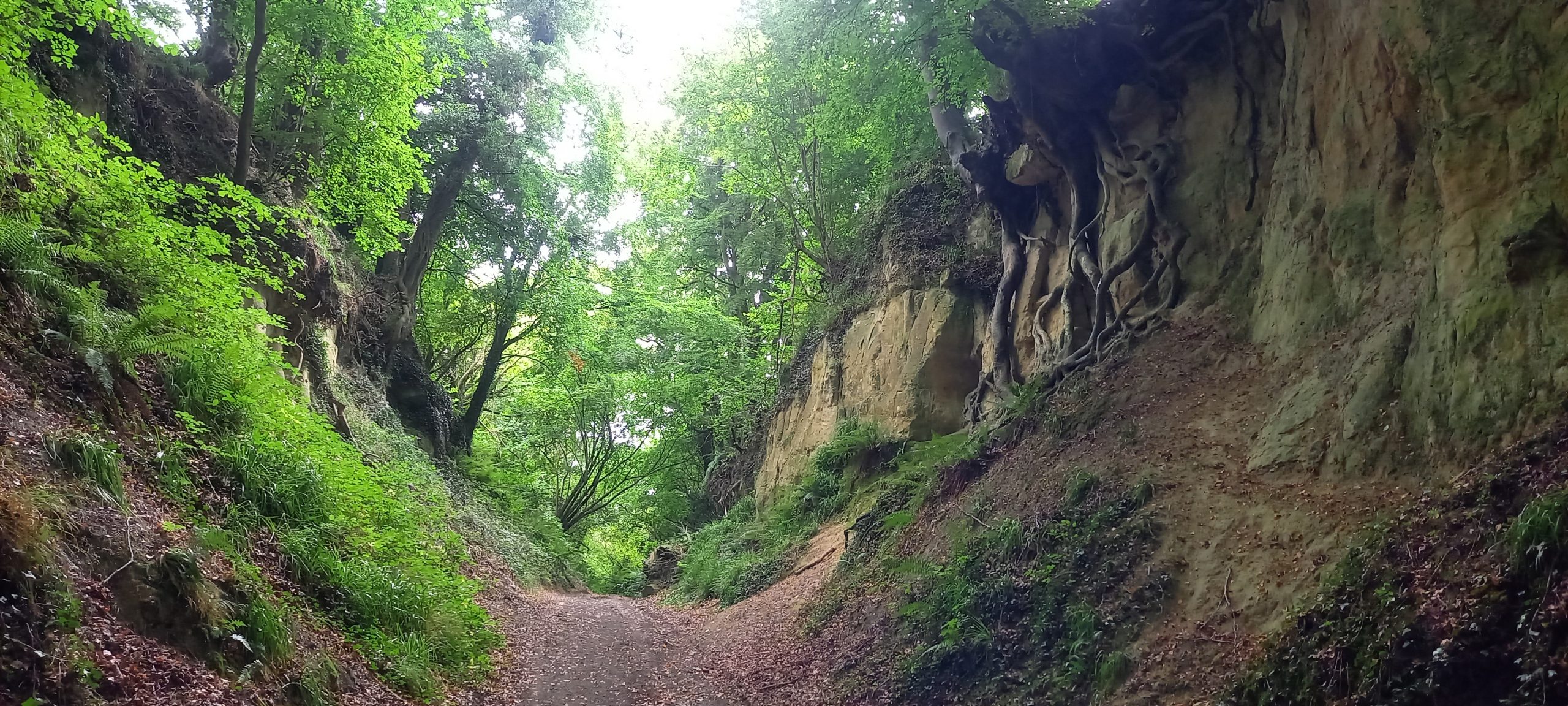NGR SU 018 570

At Folly Wood, Easterton Sands, south of Devizes, a small ‘cave’ is located on the southwest side of a small gorge/ravine with sunken lane at its base. The ‘cave is found mid-section of an exposure of Upper Greensand, described as sand and sandstone, fine-grained silt, glauconitic, shelly, formed during the Cretaceous Period, 113 and 93.9 million years ago and very close to the geological boundary with Gault Formation – Mudstone formed between 113 and 100.5 million years ago during the Cretaceous period. (BGS, online). The entrance, ca 1-metre-high x 0.5-metre-wide, leads to a small chamber with abundant pick-marks evident on both sides and roof, the passage soon lowers and closes down, overall length <6 metres. There were etchings/inscriptions in the chamber and to the left side of the entrance, these were of modern date. The soft nature of the substrate makes it likely that potential inscriptions of older date have been eroded away.

The anthropogenically altered ‘cave’ might have an alternative identity as described below:
“…Quabb’s Hole. This was a hole dug out of the sand, on the hill above Maggot Castle, separated from the Folly by a deep ravine, where the land slopes from Easterton to Crook’s farm. Quabb was a loner, a poacher and petty thief, whose exploits have been much embroidered. He stole sheep and hens and poached when and where he could, living alone in his cave where he died. When discovered, the cave was full of sheepskins and feathers. It was then filled in and forgotten. The story is never heard now but the events must have taken place about the beginning of the 19th century.”(Market Lavington Museum, online)
It is interesting to note that “quabb” is possibly derived from the Old English word cwabba “marsh”. A reflection on the ‘soft ground’ in the surrounding area perhaps.
Sources consulted:
British Geological Survey (BGS), https://geologyviewer.bgs.ac.uk Accessed 18/09/2023
https://marketlavingtonmuseum.wordpress.com/2011/10/29/the-folly/ Accessed 14/09/2023


